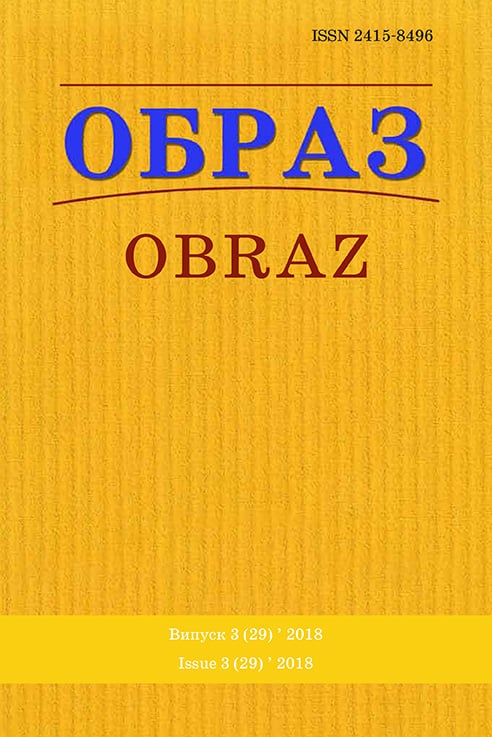Abstract
Introduction. The modern travel media text is a rather common way of presenting information about travels to foreign destinations, as the aspiration to reflect the complex image of the modern world and readers’ demands encourage the publicist to actively seek the means of updating the format, subject, genres and mode of interaction with the reader. The relevance of the research is defined by the uncertainty in genre affiliation of travelogues. The aim of the research is to determine the representativeness of genre features of guidebooks and travelogues, as well as to determine the main features of guidebooks that are also characteristic of travelogues.
Methodology. The research is based on a methodological principle that unites logical, typological and contrastive analyses of travel media texts. The specific nature of the logical method lies in highlighting only the most essential, defining and fundamental genre features of guidebooks and travelogues. The typological method has made it possible to determine the common and distinct genre features of the texts under research. The specific nature of the comparative method lies in comparing genre features of guidebooks and travelogues. The systematic-structured method has been used to determine the place and role of the author upon creating an itinerary, and to determine the significance of documentary facts upon recreating the real path. Results. As part of the study, common genre features of guidebooks and travelogues have been defined. It has been found out that guidebooks are notably characterized by their factual nature, documentary detailing, lack of imagery and consistent continuous reflection of the way the traveler moves. It has been proved that travelogues also display some fundamental features of guidebooks – factual nature and movement along a defined travel path, however the information is presented in different ways. Travelogues are characterized by image-bearing comprehension of facts and their interpretation by the author. The reflection of the path taken by the author is often discrete. The movement along the defined path is interrupted by remarks, thoughts, reflections, image-bearing digressions. It has been explained that besides having guidebook features, travelogues also necessarily have a publicity reflection of reality and author’s presence. Conclusions. The main element of a travelogue is the itinerary defined by the author himself, which confirms the affiliation of the text with documentary journalism. The mentioned issue requires further investigation in order to determine the accurate affiliation of travelogues with a certain genre group, as well as to specificate the features of the travelogue that would allow it to be identified as an established genre form.
References
1. Aleksandrov, O. (2015), “Travel essay: «memory of the genre». The first article. At the intersection of mass communication types”, Dialoh: Media-studii: Zbirnyk naukovykh prats, iss. 20, pp. 8–35.
2. Bidun, A. (2013), «Guide as a genre of reference literature at the domestic book market»,Kolo. Knyhoznavchyi chasopys,no. 5.
3. Varykasha, M. (2010), «Non-fiction literature: between fact and fiction», Aktualni problem slovianskoi filolohii, iss. ХХІІІ, part. 3, pp. 28–38.
4. Kidruk, M. (2010), Liubov i pirani [Love and Piranhas], Nora-Druk, Kiev, Ukraine.
5. Maiha, A. (2014), «Literary Travellor: Genre Specifics», Filolohiia i nauka, no. 3 (37), pp. 254–259.
6. Poliezhaiev, Yu. (2012), «The origins of travel-journalism in Ukraine: travel literature», Sotsialni komunikatsii, no. 4 (12), pp. 109–113.
7. Poliezhaiev, Yu. and Zoska, Ya. (2014),»Travel journalism: social and ideological dimensions (overview of foreign studies)», Derzhava ta rehiony. Seriia: Humanitarni nauky, no. 4, pp. 103– 105.
8. Rozanova, Yu. N. (2014), «Guide as a genre of tourist discourse: diachronic aspect», Istoricheskaya i sotsialno–obrazovatelnaya mysl, no. 5 (27), pp. 281–285, availableat: http:// cyberleninka.ru/article/n/putevoditel-kak-zhanr-turisticheskogo-diskursa-diahronicheskiyaspekt (access date November 15, 2018).
9. Pecherskaia, T. I. and Konstantinova, N. V. (2016), Russkiy travelog XVIII–XX vekov: marshruty, toposy, zhanry i narrativy [Russian Travelogue of the 18th-20th Centuries: routes, toposes, genres and narratives], monograph, Izd-vo NGPU, Novosibirsk, Russia, available at: http://docplayer.ru/28818284-Russkiy-travelog-xviii-xx-vekov.html (access date November 15, 2018).
10. Rutsinskaya, I. I. (2011), «Guidebook as a kind of reference publication: genre specifics and form of interaction with the reader», Yazyk i kultura, Iss. 14 (148), vol. 2, pp. 78–85, available at: http://bit.ly/2oSgdfv (access date November 15, 2018).
11. Yufereva, O. (2013), «Media-travelogue in the modern print edition: genre origin, specifics, modifications», Visnyk Lvivskoho universytetu, Seria zhurn, iss. 38, pp 235–241.
12. Yufereva, O. (2010), Zhanrovo-rodovyisyntez u poetychnomu shchodennyku ta podorozhi (ukrainska ta rosiiska literatura ХІХ – pochatku ХХ st.) [Genre-genitive synthesis in poetic diary and travel (Ukrainian and Russian literature of the XIX - early XX centuries)], monograph, Zaporizhzhia, Ukraine.
13. Shulgun, M. E. (2011), «The problem of genre and metagenre specifics of travel», Russkaya literatura. Issledovaniya : sbornik nauchnyh trudov, Iss. ХV, pp. 141–159, available at: http:// dspace.nbuv.gov.ua/bitstream/handle/123456789/105465/11-Shulgun.pdf?sequence=1 (access date November 15, 2018).

This work is licensed under a Creative Commons Attribution 4.0 International License.

